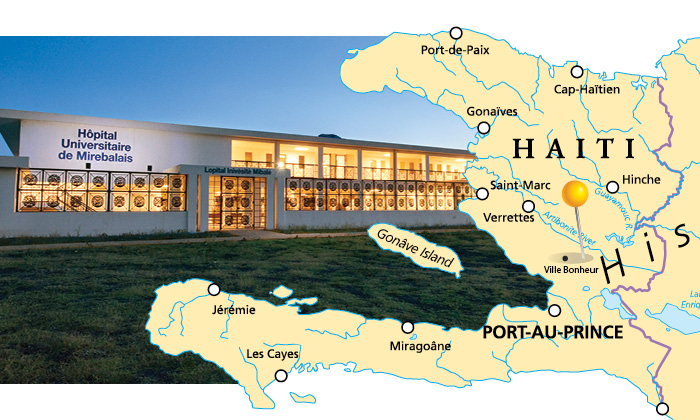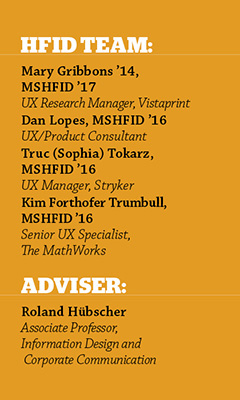
When Boston-based Partners in Health (PIH) set out to minimize wait time and maximize care at Haiti’s University Hospital emergency room, they placed a critical call of their own. On the other end of the line: Bentley professor Bill Gribbons, a leading authority on user experience (UX).
The Challenge — developing an electronic triage system to replace the hospital’s paper-based process — drew a flood of interest from his extensive network of students, alumni and fellow experts.
“Projects that require in-depth involvement and make an immediate impact on a product are invaluable for students,” says Gribbons, who directs the master’s program in Human Factors in Information Design (HFID). “That’s especially true for graduate students, who are looking to grow their career and stand out in a crowded marketplace.”
 Four HFID students in the classes of 2016 and 2017 signed on, willing to work on the project remotely, for no pay or academic credit. Kim Forthofer Trumbull, the team lead, was in Maine; Mary Gribbons in Massachusetts; Truc (Sophia) Tokarz in California; and Dan Lopes in Ontario, Canada. All have since graduated.
Four HFID students in the classes of 2016 and 2017 signed on, willing to work on the project remotely, for no pay or academic credit. Kim Forthofer Trumbull, the team lead, was in Maine; Mary Gribbons in Massachusetts; Truc (Sophia) Tokarz in California; and Dan Lopes in Ontario, Canada. All have since graduated.
Setting Requirements — The electronic emergency intake form had two primary requirements: permit easy scanning by a nurse and visually signal the urgency of a patient’s medical needs. There were cultural considerations, too.
“One of the biggest challenges for the team was coming up with a user-friendly design for a population that has limited access to computers,” says David DeSimone, business analyst at PIH. “Their initial designs used a keyboard only, with no mouse. By the time we implemented the technology, we were able to train the nurses on Google Chromebooks.”
User testing had to overcome geographic distance and the lack of readily available technology. The Bentley team designed static mock-ups and used a “cognitive walkthrough” exercise that asked nurses to role play a patient-intake scenario.
“This helped us better understand the human thought process behind the product’s use,” says Trumbull. “We knew it was possible that lives could depend on nurses understanding the new app as quickly as possible.”
“We knew it was possible that lives could depend on nurses understanding the new app as quickly as possible.”
A Winning Prescription — The project had benefits all around. The students improved the hospital experience for patients in Haiti, while building and testing their own skills.
“The project was much more like a real consulting gig instead of a ‘realistic’ project done over a semester and graded by a professor,” says Trumbull. “This provided us with real-world pressure as well as real-world confidence and experience.”
For PIH, the venture is a first in terms of developing a product that triages patients electronically in real time. Anecdotally, they say, emergency room waiting times are lower and, more important, prioritization has improved so the most critical patients are seen first. They plan to collect data on the product’s effectiveness and hope to see the intake form replicated at other facilities in Haiti and elsewhere.
“We looked to Bentley because we knew that their graduate students would be accountable for their work and thoughtfully execute this project,” says DeSimone. “They asked all the right questions and delivered a product that was immediately well received.”

